Thursday☕️

Trending:
- Today, May 8, 2025, Cardinal Robert Francis Prevost, a 69-year-old from Chicago, was elected the 267th pope, becoming the first American to hold the office and taking the name Leo XIV. White smoke from the Sistine Chapel at 2:00 PM and the “Habemus Papam” announcement prompted celebration in St. Peter’s Square. An Augustinian with Italian, French, and Spanish roots, Prevost was a lesser-known candidate who bridged progressive and conservative factions in the conclave. His experience includes missionary work, serving as a bishop in Peru (2015–2023) with Peruvian citizenship, and Vatican roles as prefect of the Dicastery for Bishops and cardinal-bishop since 2023.

- As Pope Leo XIV, he leads a Church of 1.4 billion facing clergy abuse scandals, declining membership in the West, and growth in Africa and Asia. Prevost, a centrist, promotes social justice, interfaith dialogue, and synodality but maintains traditional views on women’s ordination and same-sex marriage. Drawing from Leo XIII’s legacy, his papacy is expected to focus on addressing poverty, migration, and Vatican reforms to guide the Church’s global role.
Economics & Markets:
- Yesterday’s U.S. stock market:

- Yesterday’s commodity market:

- Yesterday’s crypto market:
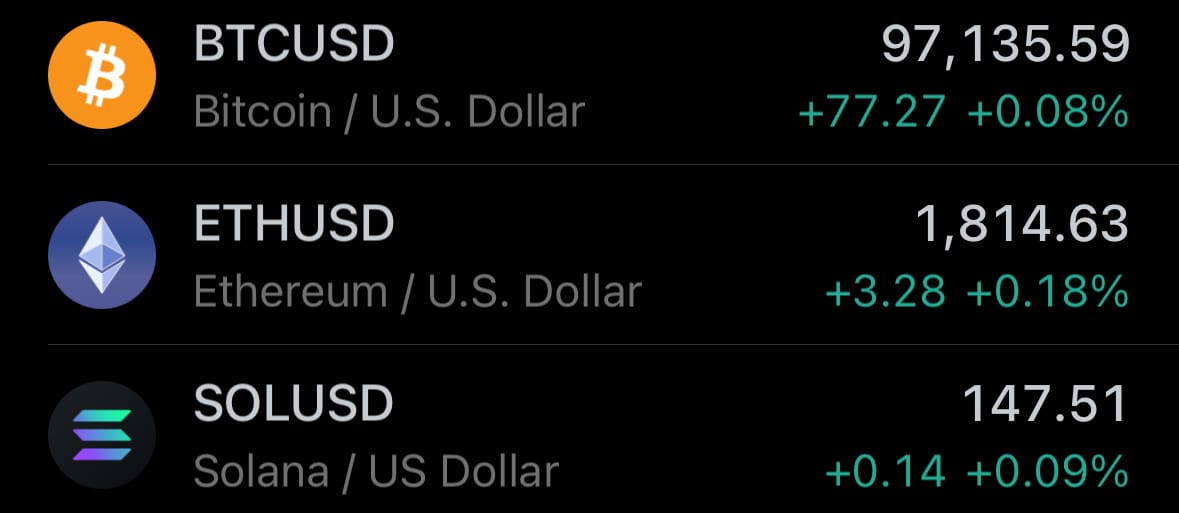
Geopolitics & Military Activity:
- On May 7, 2025, India launched Operation Sindoor, striking sites in Pakistan’s Punjab province, including Bahawalpur and Muridke, and Pakistan-administered Kashmir, including Muzaffarabad and Kotli, using missiles and jets. The strikes were in response to a militant attack on April 22 in Pahalgam, Indian-administered Jammu and Kashmir, which killed 26 civilians, mostly Hindu tourists. India claimed the targets were terrorist bases linked to groups like Lashkar-e-Taiba, denying civilian or military sites were hit. Pakistan reported 31 deaths, including civilians, alleging strikes targeted non-military areas like mosques, and claimed to have downed Indian aircraft, though India has not confirmed this. Pakistan retaliated with artillery and missile fire along the Line of Control (LoC), targeting civilian areas in Indian-administered Kashmir, where India reported 16 civilian deaths, mainly in Poonch.
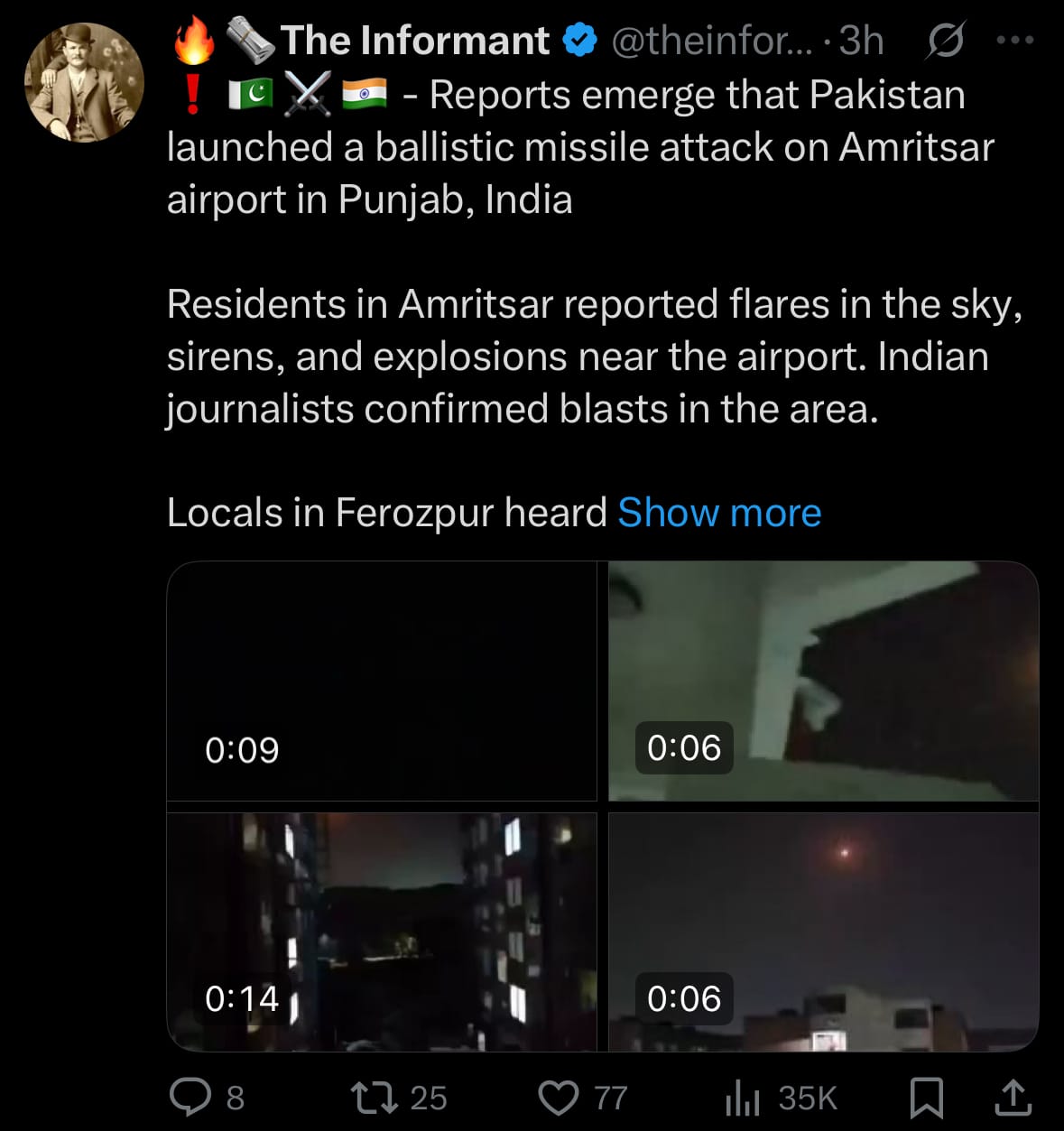
- On May 8, 2025, Pakistan escalated its response, launching missiles, artillery, and drones at Indian military posts in Jammu, Pathankot, and Udhampur in Jammu and Kashmir, which India said were neutralized by air defenses. India struck back, targeting sites in Pakistan’s Punjab region, with explosions reported in Lahore and unconfirmed reports in Sialkot. Both countries heightened security measures: India mandated secondary passenger checks at all airports, while Pakistan restricted airspace, closing Lahore and Sialkot airports until noon on May 8. The ongoing strikes, rooted in the long-standing Kashmir dispute between the nuclear-armed neighbors, have caused civilian casualties on both sides and raised international concerns about further escalation.
Environment & Weather:
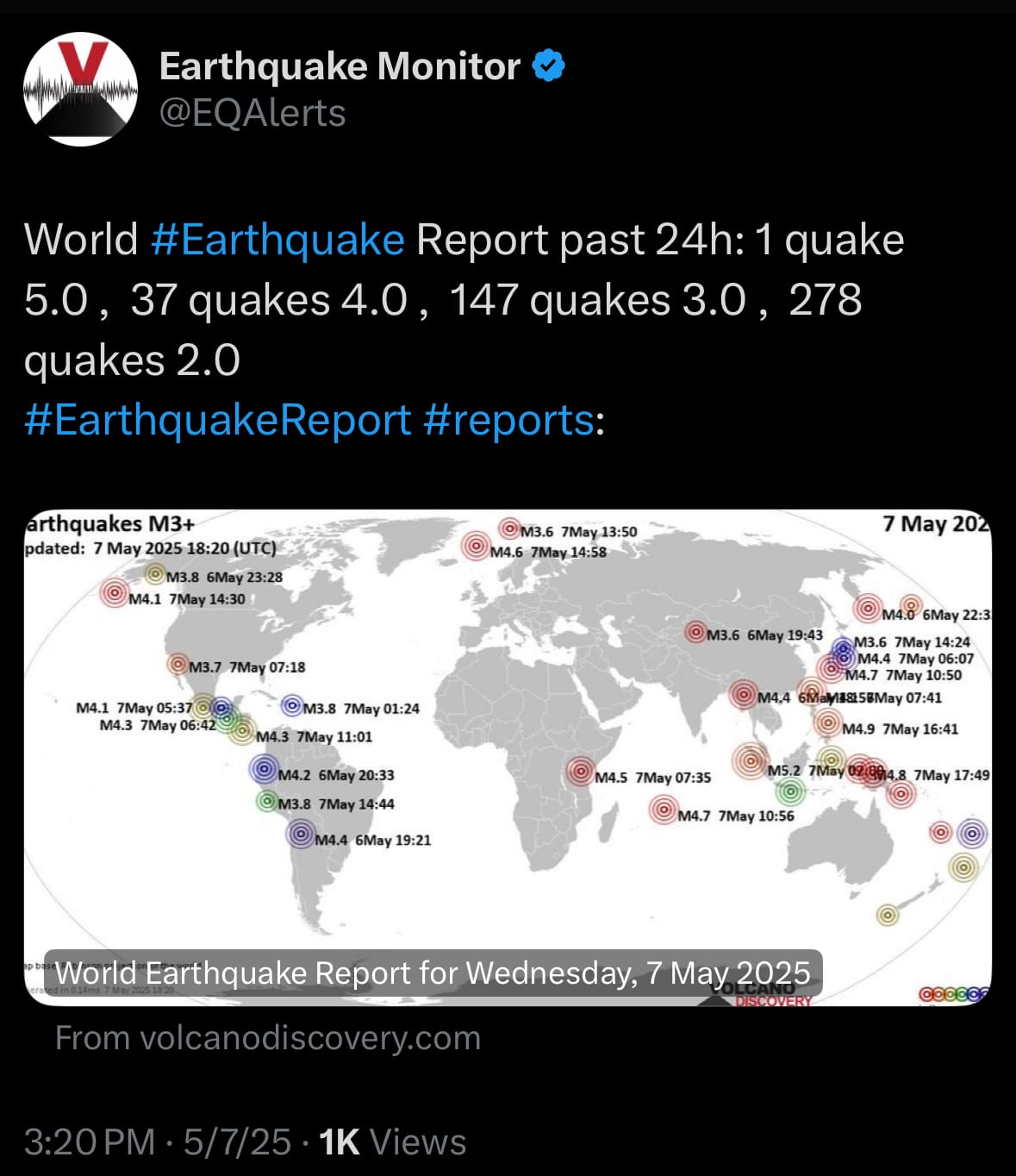
Science & Technology:
- On May 7, 2025, Anthropic announced that its API for Claude now includes web search functionality, allowing developers to enhance Claude’s knowledge with real-time internet data. This feature enables Claude models, such as Claude 3.7 Sonnet, 3.5 Sonnet, and 3.5 Haiku, to evaluate queries, generate search terms, retrieve relevant results, and provide cited responses. Developers can configure search settings, including domain restrictions and search limits via the max_uses parameter, without needing to build their own search systems. Priced at $10 per 1,000 searches plus standard token fees, this tool supports applications in fields like finance, legal research, and software development by providing access to current information, such as market data or technical documentation.
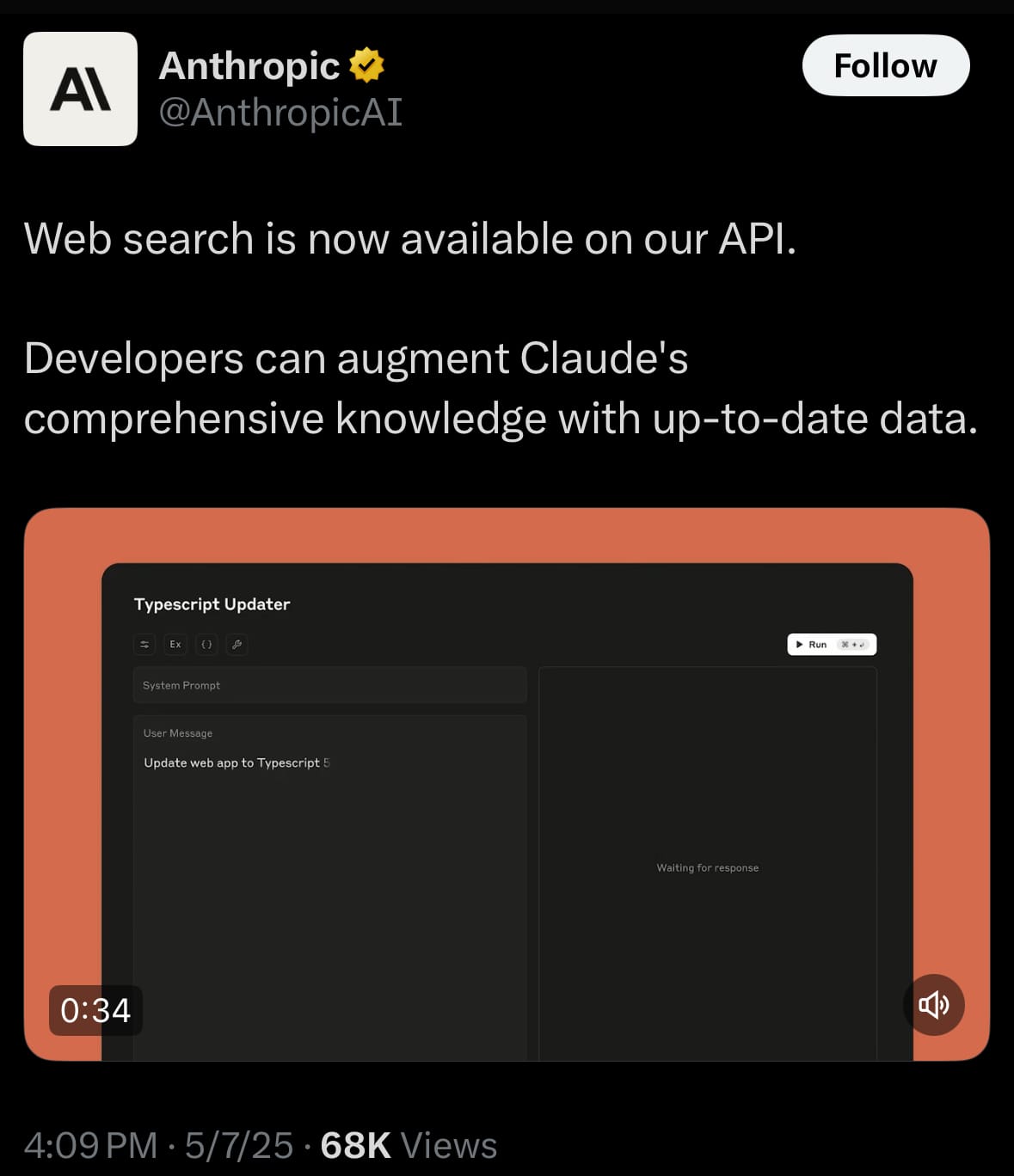
- This web search capability makes Claude a stronger competitor to other AI assistants, addressing limitations of static knowledge bases. The system supports iterative searches, refining queries based on results, which aims to replicate human research processes and improve response accuracy. The feature also enhances Claude Code for coding tasks by accessing up-to-date technical resources. However, potential challenges include the risk of errors, as some studies highlight inaccuracies in AI-driven web searches. Anthropic advises verifying cited sources to ensure reliability, supporting use cases like market analysis and consumer research while acknowledging the need for careful implementation.
Statistic:
- Largest public companies by market capitalization:
- 🇺🇸 Microsoft: $3.220T
- 🇺🇸 Apple: $2.931T
- 🇺🇸 NVIDIA: $2.856T
- 🇺🇸 Amazon: $2.003T
- 🇺🇸 Alphabet (Google): $1.842T
- 🇸🇦 Saudi Aramco: $1.601T
- 🇺🇸 Meta Platforms: $1.500T
- 🇺🇸 Berkshire Hathaway: $1.117T
- 🇺🇸 Broadcom: $963.00B
- 🇹🇼 TSMC: $905.26B
- 🇺🇸 Tesla: $889.69B
- 🇺🇸 Walmart: $790.72B
- 🇺🇸 Eli Lilly: $697.28B
- 🇺🇸 JPMorgan Chase: $693.07B
- 🇺🇸 Visa: $670.19B
- 🇨🇳 Tencent: $569.05B
- 🇺🇸 Mastercard: $514.27B
- 🇺🇸 Netflix: $491.70B
- 🇺🇸 Exxon Mobil: $450.83B
- 🇺🇸 Costco: $446.85B
- 🇺🇸 Oracle: $418.86B
- 🇺🇸 Johnson & Johnson: $378.47B
- 🇺🇸 Procter & Gamble: $373.46B
- 🇺🇸 Home Depot: $360.54B
- 🇺🇸 UnitedHealth: $355.95B
History:
- The history of artificial intelligence (AI) began in the mid-20th century, sparked by philosophical questions about machine cognition and early computational advances. Alan Turing’s 1950 Turing Test laid the groundwork, challenging whether machines could mimic human intelligence. The term “artificial intelligence” was coined in 1956 at the Dartmouth Conference, led by John McCarthy, marking the field’s formal birth. Early efforts included the Logic Theorist (1955), which proved mathematical theorems, and ELIZA (1960s), a primitive chatbot. The 1980s brought expert systems like MYCIN for medical diagnostics, but computational limits and unmet expectations triggered “AI winters” of reduced funding. By the 1990s, IBM’s Deep Blue defeating Garry Kasparov in 1997 showcased narrow AI’s potential, while machine learning, particularly neural networks, gained traction, setting the stage for transformative breakthroughs driven by increased data and computing power.
- The 21st century saw AI’s explosive growth, catalyzed by the 2017 Transformer architecture and culminating in OpenAI’s ChatGPT launch on November 30, 2022, which ignited a global AI wave, reaching 100 million users in two months. This spurred a race among Google (Gemini), Anthropic (Claude), Meta (LLaMA), xAI (Grok), and DeepSeek, shifting AI from research to mainstream applications in language processing, coding, and multimodal tasks. Looking ahead, quantum AI infrastructure, with systems like Quantinuum’s Helios (2025), promises exponential speed-ups for optimization and drug discovery, though scalable qubits remain a challenge. Next-generation models, using state-space models and quantum algorithms, aim for efficiency and specialization, addressing ethical and energy concerns. Fully integrated AI Earth systems will enhance climate modeling and resource management, leveraging IoT and quantum cryptography, but require robust infrastructure and interdisciplinary collaboration.
Image of the day:

Thanks for reading!
Earth is complicated, we make it simple.
Click image to view the Earth Intelligence System:
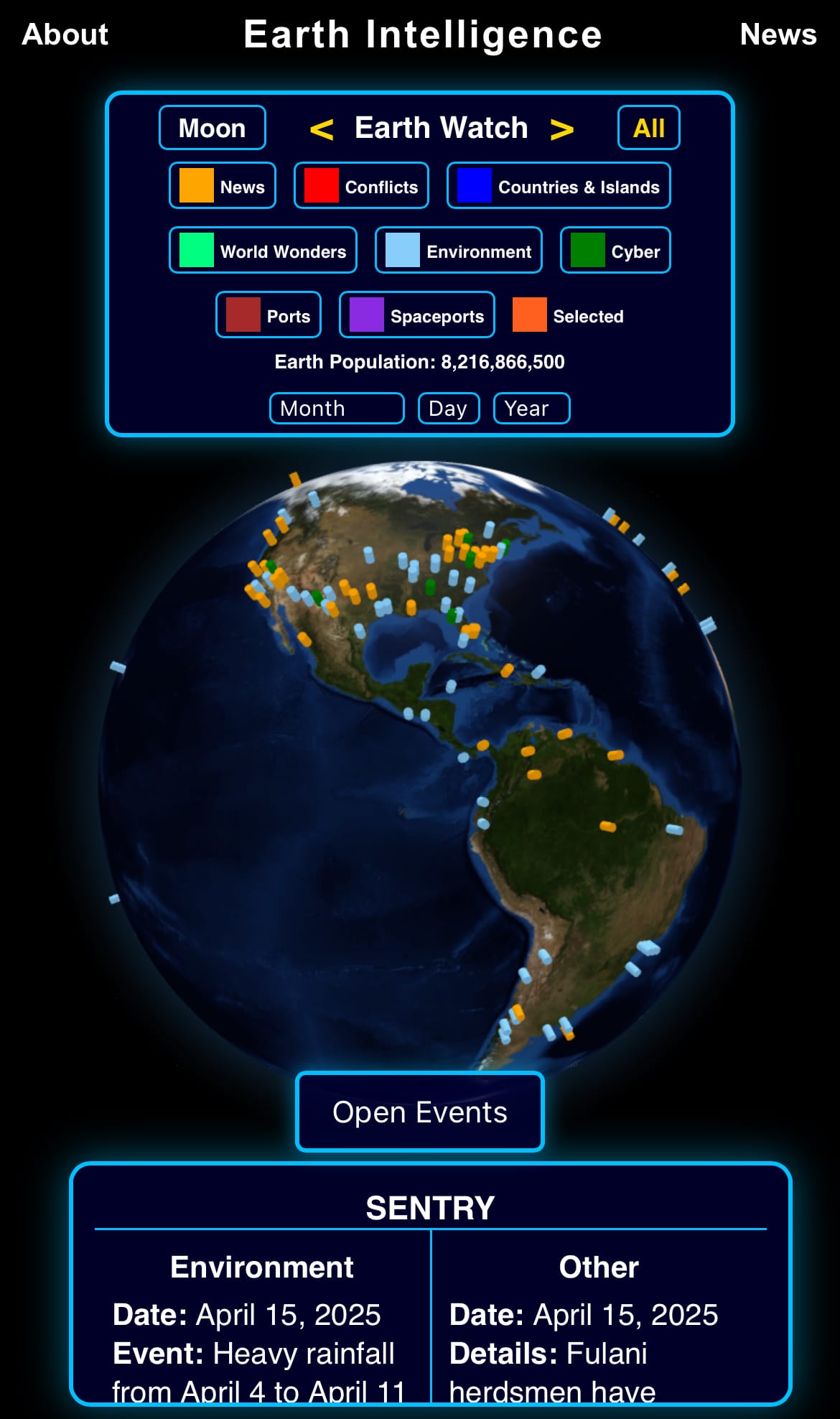


Support/Suggestions Email:
earthintelligence@earthintel.news




